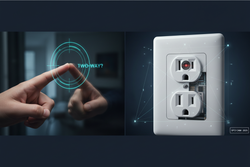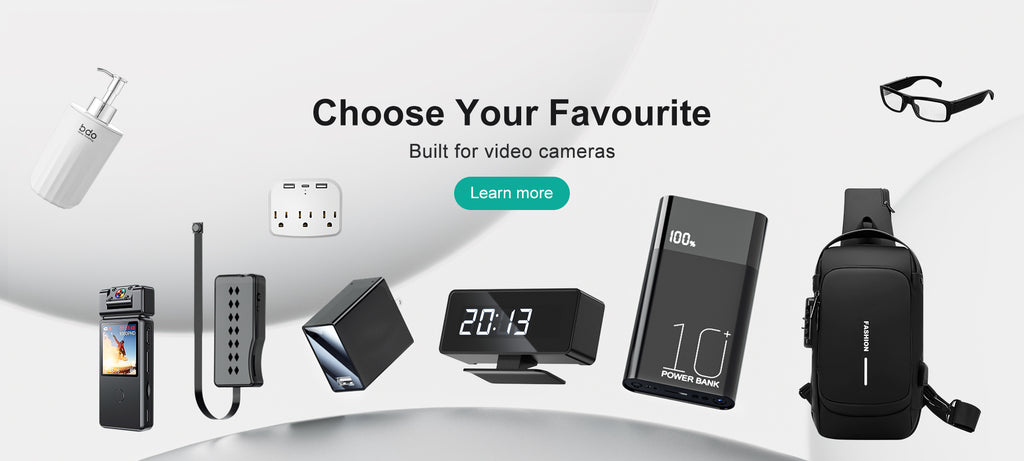Discreet Surveillance Cameras for Residential Safety: A Comprehensive, Lawful & Ethical Guide for 2025
Why consider a hidden camera at home in 2025?
Traditional security cameras are great deterrents, but not every situation benefits from a conspicuous device. A well-placed, legally used hidden camera can help you monitor entryways, packages, or sensitive rooms without changing your décor or tipping off opportunistic thieves. The key words are legally and ethically: you’re protecting your property, not invading someone else’s privacy.
Important: This article focuses on lawful, ethical use on property you own or control. We do not advise, endorse, or explain covert surveillance of people without notice where it’s illegal or violates consent.
Quick decision table: Wi-Fi vs. Non-Wi-Fi hidden cameras
| Scenario | Wi-Fi Hidden Camera | Non-Wi-Fi (Local Storage) |
|---|---|---|
| You want live viewing on your phone | Excellent | Limited (no live feed) |
| Spotty internet or strict privacy needs | Okay (with strong security) | Excellent |
| Easiest setup for notifications | Excellent (push alerts) | Moderate (review later) |
| Data risk surface | Higher (cloud + network) | Lower (no cloud) |
| Battery life | Moderate | Often longer |
Takeaway: If you need live alerts, choose Wi-Fi with strong security. If you prioritize simplicity and privacy, a non-Wi-Fi model with SD card can be ideal.
2025 feature checklist (what actually matters)
-
Resolution & low-light
-
Aim for clean 1080p minimum; 2K/4K helps when you need faces or text.
-
Look for true low-light performance or IR night vision with minimal glare.
-
-
Field of view (FOV)
-
90–120° is versatile indoors. Ultra-wide can distort details; narrow can miss action.
-
-
Power & endurance
-
Plug-in for continuous areas (entry hall, garage).
-
Battery for temporary or off-grid spots—check rated hours in continuous and motion-triggered modes.
-
-
Storage
-
Local (microSD): simple, private, but vulnerable if the device is stolen—rotate cards.
-
Cloud: convenient clips and sharing; ensure region and encryption meet your standards.
-
-
Connectivity & alerts
-
For Wi-Fi: dual-band support helps reliability.
-
Smart motion detection (human/vehicle filtering) reduces false alarms.
-
-
Disguise & build quality
-
The goal is unobtrusive, not deceptive. Choose designs that blend with your décor (clock, bookshelf object, frame), avoiding anything that could create privacy concerns in sensitive rooms.
-
-
Audio & two-way talk
-
In many regions, recording audio is restricted. Disable audio if uncertain.
-
-
Security
-
Must-have: unique strong passwords, firmware updates, encrypted streams, and ideally 2FA for apps.
-
Legal & ethical guardrails (read this first)
-
Own space only: Use hidden cameras only in areas you own or control, and never where people reasonably expect privacy (bathrooms, bedrooms used by guests, changing areas).
-
Notice & consent: In many jurisdictions, notifying residents/guests is required or strongly advised—especially for audio. If you employ caregivers or contractors, follow labor and consent rules.
-
Audio is different: Laws around audio recording are often stricter than video. When in doubt, disable audio.
-
No spying: Do not point cameras into neighbors’ homes, shared hallways you don’t control, or public places to track individuals.
-
Retention: Keep recordings only as long as needed for security purposes. Delete what you don’t need.
This article is not legal advice. Always check local laws and, if needed, consult an attorney before recording.
Where a hidden camera can make sense at home
-
Entryways & foyers: Capture who enters your property.
-
Package drop zones / mudrooms: Identify porch piracy without advertising your setup.
-
Garage or tool rooms: Monitor high-value gear.
-
Home office with sensitive documents: Keep an eye on access when you’re away.
Avoid: Bathrooms, private bedrooms used by others, or any location where a person reasonably expects privacy.
Smart placement principles (without being creepy)
-
Eye-level is not always best: Slightly above chest height often balances detail with coverage.
-
Control the backlight: Don’t aim directly at bright windows; you’ll lose faces to silhouette.
-
Mind reflections: Mirrors and glossy surfaces can reveal the device—if privacy signage is required in your area, post it clearly.
-
Test motion zones: Walk test to tune sensitivity; aim for movement across the field of view, not straight toward the lens.
Data security: protect what you record
-
Change default passwords immediately and use a password manager.
-
Enable 2FA on the camera app/account.
-
Keep firmware updated; schedule a monthly check.
-
For local storage, rotate SD cards and keep a backup encrypted drive for incident footage.
-
If you use cloud storage, confirm data region, encryption, and retention policies.
Wi-Fi vs. non-Wi-Fi: quick “best fit” picks
-
You travel a lot & want live alerts: Choose a reputable Wi-Fi model with human detection and strong app security.
-
Privacy-first household or rental with spotty internet: Choose a high-end non-Wi-Fi model with large SD storage and long battery life.
-
Mixed approach: Use visible, deter-first cameras outdoors and one discreet, legally placed hidden camera for a sensitive indoor zone.
Common mistakes to avoid
-
Using audio where it’s restricted.
-
Hiding cameras in prohibited spaces.
-
Forgetting signage or notice when required.
-
Leaving default passwords in place.
-
Neglecting lighting tests—poor lighting ruins identification.
-
Relying on a single camera angle—blind spots are real.
FAQ
Is it legal to use a hidden camera in my home?
Often yes—for your own property and in non-private areas—but laws vary by region, and audio recording has stricter rules. Check local statutes.
Should I pick 2K/4K over 1080p?
If you need detail (faces, text), 2K/4K helps. For general monitoring, a clean 1080p with strong low-light is fine.
Can non-Wi-Fi cameras send alerts?
Typically no. They record locally. If you need alerts, go Wi-Fi or pair with a smart sensor system.
How long should I keep footage?
Keep only what you need—30 days is common for home use, shorter if storage is limited or laws require minimization.
Can I hide cameras from household members?
Transparency is best. Secretly recording household members can violate trust and, in some regions, the law.
Editorial stance & ethics
This guide aims to help responsible homeowners protect property and loved ones while honoring privacy. We will not provide tactics for spying on people or evading detection or law enforcement.
Call to action
Want a customized, law-aware setup checklist for your country or state? Contact us, and we’ll tailor a compliant, privacy-respecting plan for your home.










